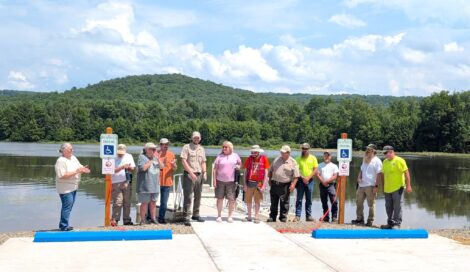‘Avoid crowds,’ ‘remain in the house’… Sound familiar? It was the Spanish Flu in 1918
“The slight increase in the number (of) cases has made it necessary for the Board of Health to take extra precautions to stop the further spread of the malady. Today, the entire city has been placarded with notices cautioning the people of the city to avoid crowds and if they have (the) slightest cough or cold to remain in the house until they have fully recovered.”
That type of language could have been published in any newspaper in the United States within the last month.
But it wasn’t.
It was published in the Warren Evening Mirror on Oct. 22, 1918. And that was during the world’s last great pandemic — the Spanish Flu, the grippe, influenza.
No one really knew where it came from but by the time the disease vanished in 1919 over 20 million people (and as high as 100 million according to some estimates) had died world-wide.
In the United States, estimates indicate 625,000 people were killed per the Pennsylvania Historical & Museum Commission.
According to a Pennsylvania Heritage article entitled “1918’s Deadliest Killer,” 50,000 people died in Pennsylvania, including about one out of every 10 citizens of Pittsburgh.
While the epicenter was Philadelphia — 17,000 deaths in October 1918 alone — the exact number of deaths in rural Pennsylvania — Warren County included — is difficult to calculate because many deaths in rural areas went unreported and burials were hasty.
The virus shut down Warren County.
The term “social distancing” doesn’t appear in any of the county’s news reports, but the health officials combatting the Spanish Flu certainly understood the idea.
Before we look at the Spanish Flu in Warren County, a brief look at the issue at a macro level is helpful.
The virus first struck in the spring of 1918, per the PHMC, in Europe, the United States and Asia.
Public health officials noticed the increased cases but the number of cases were typical for the disease.
“What made the 1918 Influenza Epidemic or Spanish Flu so unusual were the two subsequent waves of infection in the fall of 1918 and the winter of 1919,” according to a PHMC article. “Such waves in one year were unprecedented.”
By the end of the waves, it’s estimated one-third of the world’s population — well over 500,000,000 people — had been infected.
The “Spanish Flu” moniker, according to the Pennsylvania Heritage article, has links to the World War that was raging at the time.
Censorship kept reports of the disease in the U.S. and much of Europe under wraps and the first news accounts of the virus emerged from Spain, which wasn’t a party to the war and as such wasn’t undertaking strict censorship requirements.
From the PHMC: “In March 1918, the first details in the United States of an influenza outbreak came from a Haskill County, Ks. report to the Public Health Service, noting that ’18 cases of influenza of a severe type had occurred. This report was important because in 1918 the Public Health Service did not require cases of influenza to be reported.”
It spread quickly and a Navy ship brought the virus to Philadelphia, with 600 soldiers diagnosed within two days.
Patients started to show up at hospitals in droves but many doctors and nurses had gone to Europe to serve during the Great War and hospitals were critically understaffed.
By the end of October, per the PHMC, case counts decreased and quarantine measures were lifted.
Death rates in the states ranged from five to 10 percent and seemed to strike people from all age ranges.
Before we look at Warren County during the pandemic, here’s a look at how a doctor stationed at a military base described the effects of the disease.
From the Pennsylvania Heritage article: “These men start with what appears to be an attack of la grippe or influenza, and when brought to the hospital they very rapidly develop the most viscous type of pneumonia that has ever been seen. Two hours after admission they have the mahogany spots on their cheek bones and a few hours later you can begin to see the cyanosis (a blue-ing of the skin due to lack of oxygen) extending from their ears and spreading all over the face… It is only a matter of a few hours then until death comes, and it is simply a struggle for air until they suffocate… We have been averaging about 100 deaths per day, and still keeping it up.”




